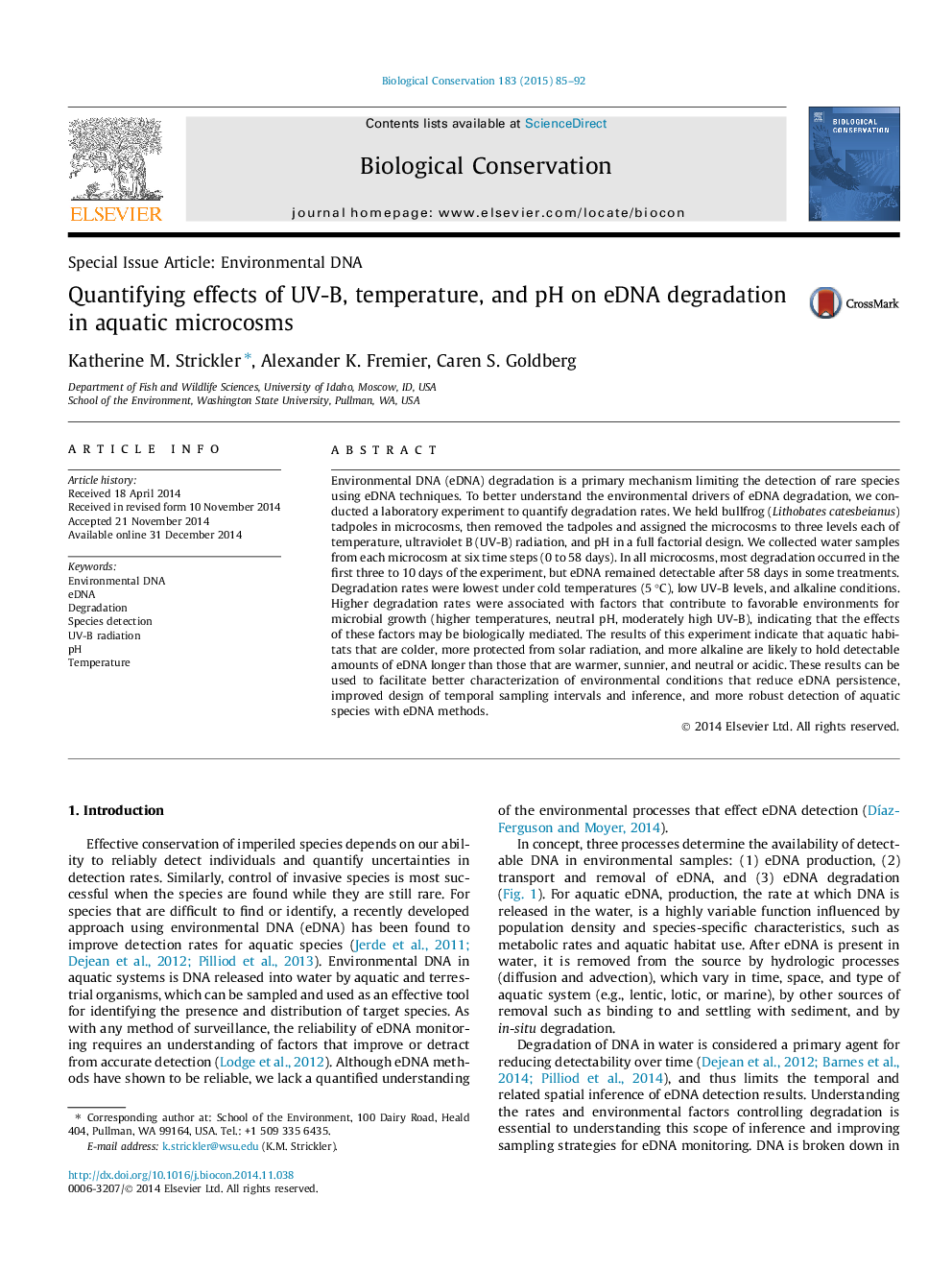| کد مقاله | کد نشریه | سال انتشار | مقاله انگلیسی | نسخه تمام متن |
|---|---|---|---|---|
| 6299200 | 1617918 | 2015 | 8 صفحه PDF | دانلود رایگان |
عنوان انگلیسی مقاله ISI
Quantifying effects of UV-B, temperature, and pH on eDNA degradation in aquatic microcosms
دانلود مقاله + سفارش ترجمه
دانلود مقاله ISI انگلیسی
رایگان برای ایرانیان
کلمات کلیدی
موضوعات مرتبط
علوم زیستی و بیوفناوری
علوم کشاورزی و بیولوژیک
بوم شناسی، تکامل، رفتار و سامانه شناسی
پیش نمایش صفحه اول مقاله

چکیده انگلیسی
Environmental DNA (eDNA) degradation is a primary mechanism limiting the detection of rare species using eDNA techniques. To better understand the environmental drivers of eDNA degradation, we conducted a laboratory experiment to quantify degradation rates. We held bullfrog (Lithobates catesbeianus) tadpoles in microcosms, then removed the tadpoles and assigned the microcosms to three levels each of temperature, ultraviolet B (UV-B) radiation, and pH in a full factorial design. We collected water samples from each microcosm at six time steps (0 to 58 days). In all microcosms, most degradation occurred in the first three to 10 days of the experiment, but eDNA remained detectable after 58 days in some treatments. Degradation rates were lowest under cold temperatures (5 °C), low UV-B levels, and alkaline conditions. Higher degradation rates were associated with factors that contribute to favorable environments for microbial growth (higher temperatures, neutral pH, moderately high UV-B), indicating that the effects of these factors may be biologically mediated. The results of this experiment indicate that aquatic habitats that are colder, more protected from solar radiation, and more alkaline are likely to hold detectable amounts of eDNA longer than those that are warmer, sunnier, and neutral or acidic. These results can be used to facilitate better characterization of environmental conditions that reduce eDNA persistence, improved design of temporal sampling intervals and inference, and more robust detection of aquatic species with eDNA methods.
ناشر
Database: Elsevier - ScienceDirect (ساینس دایرکت)
Journal: Biological Conservation - Volume 183, March 2015, Pages 85-92
Journal: Biological Conservation - Volume 183, March 2015, Pages 85-92
نویسندگان
Katherine M. Strickler, Alexander K. Fremier, Caren S. Goldberg,